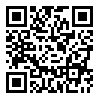Sat, Apr 20, 2024
Volume 4, Issue 3 (Summer 2018)
Iran J Neurosurg 2018, 4(3): 167-172 |
Back to browse issues page
Download citation:
BibTeX | RIS | EndNote | Medlars | ProCite | Reference Manager | RefWorks
Send citation to:



BibTeX | RIS | EndNote | Medlars | ProCite | Reference Manager | RefWorks
Send citation to:
Gaye M, Sakho Y, Moumouni A K, Aidara C M, Jalloh M, Latif A. Anatomo-Radiological Patterns of the Tethered Spinal Cord With Lipoma. Iran J Neurosurg 2018; 4 (3) :167-172
URL: http://irjns.org/article-1-99-en.html
URL: http://irjns.org/article-1-99-en.html
Magatte Gaye * 

 1, Youssoupha Sakho2
1, Youssoupha Sakho2 
 , Abd-El Kader Moumouni2
, Abd-El Kader Moumouni2 
 , Cherif Mohamadou Aidara3
, Cherif Mohamadou Aidara3 
 , Mohamed Jalloh4
, Mohamed Jalloh4 
 , Amadou Latif4
, Amadou Latif4 



 1, Youssoupha Sakho2
1, Youssoupha Sakho2 
 , Abd-El Kader Moumouni2
, Abd-El Kader Moumouni2 
 , Cherif Mohamadou Aidara3
, Cherif Mohamadou Aidara3 
 , Mohamed Jalloh4
, Mohamed Jalloh4 
 , Amadou Latif4
, Amadou Latif4 

1- Department of Neurosurgery, Hospital General Grand Yoff, Dakar, Senegal , magou762003@yahoo.fr
2- Department of Neurosurgery, Hospital General Grand Yoff, Dakar, Senegal
3- Department of Radiology, Hospital Pikine, Dakar, Senegal
4- Department of Urology, Hospital General Grand Yoff, Dakar, Senegal
2- Department of Neurosurgery, Hospital General Grand Yoff, Dakar, Senegal
3- Department of Radiology, Hospital Pikine, Dakar, Senegal
4- Department of Urology, Hospital General Grand Yoff, Dakar, Senegal
Abstract: (4132 Views)
Background and Aim: Tethered spinal cord is the most common anatomic deformity which is usually diagnosed in childhood. This study aimed to describe the different anatomo-radiological patterns of the tethered spinal cord with lipoma.
Methods and Materials/Patients: We conducted a retrospective and descriptive study in Neurosurgery Department of General Grand Yoff Hospital and the Neurosurgical Clinic at Fann University Hospital of Dakar, Senegal. Eight patients with spinal cord lipoma underwent surgery in these medical centers from July 2007 to January 2011. Anatomo-radiological and clinical data of the patients were collected and analyzed.
Results: The mean age of the patients was 4 years ranging from 45 days to 30 years. Male to female ratio was 0.6. The symptomatic triad of median cutaneous signs, orthopedic, and sphincter disorders was found in 2 (25%) patients. Neuroimaging, mainly MRI, showed conus medullaris lipoma in 7 (87.5%) cases, and a filum terminalis lipoma in 1 (12.5%) case. All patients had a tethered spinal cord with a low-lying conus medullaris. The dehiscence of posterior lumbosacral and sacral vertebral arches was noted in 7 (87.5%) cases and scoliosis and scalloping each in 1 case. All patients were operated and the outcome was good for 5 (62.5%) patients. No death has been reported. According to surgical findings, the patients were grouped in the modified Chapman’s classification.
Conclusion: In comparison to myelomeningocele, tethered spinal cord with lipoma is a rare condition. Health practitioners should be aware of this condition when facing a child or a young adult patient bearing a median lumbar sacral cutaneous stigmata associated with or without lower limb orthopedic abnormalities and or sphincter disorders. Ultrasound and MRI are good diagnostic tools for the newborn allowing to make good surgical planning. However, MRI is reportedly more sensitive and the surgical option for asymptomatic cases has remained controversial. To our experience, the surgical findings can provide comprehensive information on the interface between the lipoma and the neural structure.
Methods and Materials/Patients: We conducted a retrospective and descriptive study in Neurosurgery Department of General Grand Yoff Hospital and the Neurosurgical Clinic at Fann University Hospital of Dakar, Senegal. Eight patients with spinal cord lipoma underwent surgery in these medical centers from July 2007 to January 2011. Anatomo-radiological and clinical data of the patients were collected and analyzed.
Results: The mean age of the patients was 4 years ranging from 45 days to 30 years. Male to female ratio was 0.6. The symptomatic triad of median cutaneous signs, orthopedic, and sphincter disorders was found in 2 (25%) patients. Neuroimaging, mainly MRI, showed conus medullaris lipoma in 7 (87.5%) cases, and a filum terminalis lipoma in 1 (12.5%) case. All patients had a tethered spinal cord with a low-lying conus medullaris. The dehiscence of posterior lumbosacral and sacral vertebral arches was noted in 7 (87.5%) cases and scoliosis and scalloping each in 1 case. All patients were operated and the outcome was good for 5 (62.5%) patients. No death has been reported. According to surgical findings, the patients were grouped in the modified Chapman’s classification.
Conclusion: In comparison to myelomeningocele, tethered spinal cord with lipoma is a rare condition. Health practitioners should be aware of this condition when facing a child or a young adult patient bearing a median lumbar sacral cutaneous stigmata associated with or without lower limb orthopedic abnormalities and or sphincter disorders. Ultrasound and MRI are good diagnostic tools for the newborn allowing to make good surgical planning. However, MRI is reportedly more sensitive and the surgical option for asymptomatic cases has remained controversial. To our experience, the surgical findings can provide comprehensive information on the interface between the lipoma and the neural structure.
Type of Study: Case report |
Subject:
Spine
Send email to the article author
| Rights and Permissions | |
 |
This work is licensed under a Creative Commons Attribution-NonCommercial 4.0 International License. |



